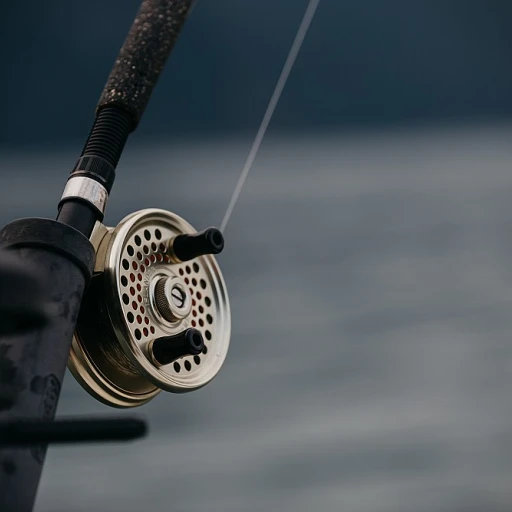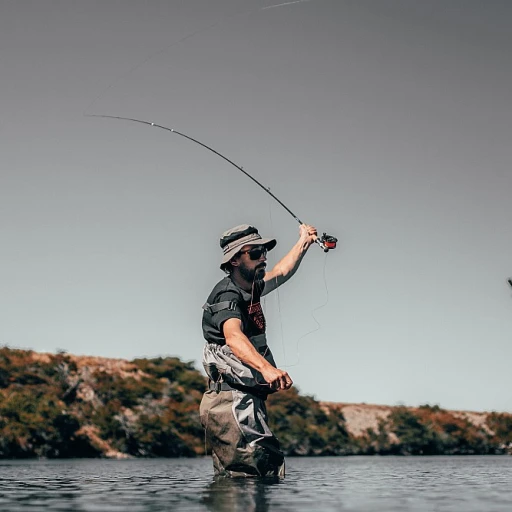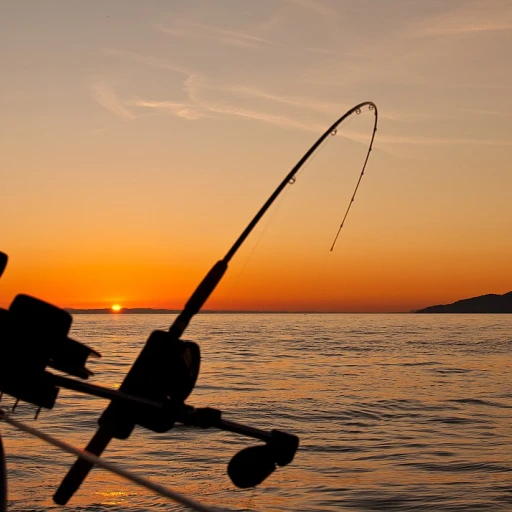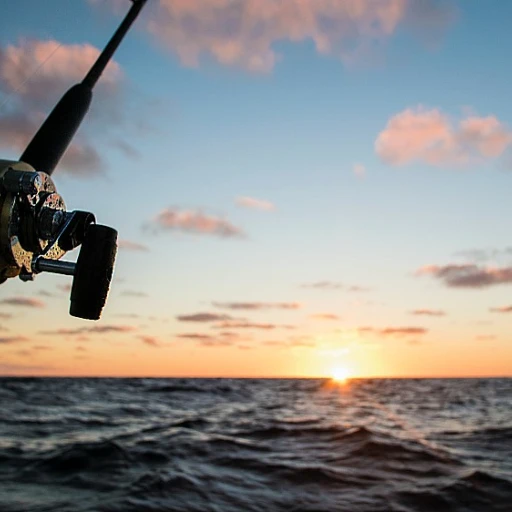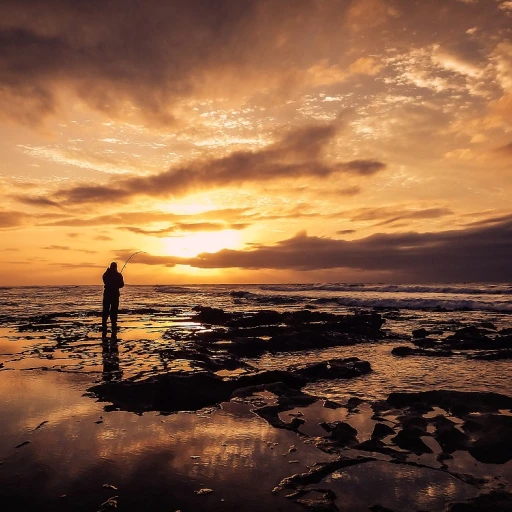
The rise of innovative fishing gear
Technology is changing the game
Fishing isn’t just about sitting quietly by the riverbank anymore. These days, anglers have access to a plethora of high-tech equipment that boosts their chances of reeling in that big catch. Fishfinders, which use sonar technology to locate fish underwater, are a game-changer. According to a 2022 report by the American Sportfishing Association, 73% of anglers reported better catch rates using electronic fish finders. And let's not forget the smart rods—these modern marvels are designed to send data straight to your smartphone, helping you track your casts, hits, and catches.Reel innovation
The old-fashioned hand-cranked reel just got a major upgrade. Today's reels are lighter, faster, and more durable thanks to advances in materials like carbon fiber and aluminum alloy. These next-gen reels are not only making fishing easier but also more enjoyable. Shimano’s 2021 model, for example, boasts a 25% increase in retrieval speed. Anglers like Anthony Alfred, a bass fishing expert, claim that the newer reels have revolutionized their fishing experience.Baits and lures: stepping up the game
When it comes to baits and lures, innovation is key. Silicone, detailed bodies, and lifelike movements make these products even more enticing to fish. Gulp! by Berkley, which releases scent and flavor steadily into the water, has a catch rate 55% higher than traditional plastic lures, as confirmed by Field & Stream in 2022. This kind of technology is not just about making fishing easier but about making it more effective overall.Eco-friendly and smarter gear
There's a growing demand for eco-friendly fishing products, and manufacturers are listening. Biodegradable baits and lead-free weights are hitting the market, designed to reduce the environmental impact on lakes and rivers. According to a 2023 study by the U.S. Fish & Wildlife Service, 42% of anglers are willing to spend more on eco-friendly gear. Greg Randall, a well-known advocate for sustainable fishing, emphasizes the importance of choosing products that minimize harm to aquatic ecosystems.Net gains
Don't overlook the humble fishing net. Modern nets are designed to minimize harm to the fish and make catch-and-release easier. Rubber nets, for instance, reduce scale damage and the removal of a fish's protective slime. Studies show that fish caught and released using rubber nets have a higher survival rate compared to those caught with traditional nylon nets.Fishing is evolving rapidly, blending tradition with technology to make you a better angler. And whether you're planning on upgrading your gear or just curious about the latest innovations, check out the must-have recreational fishing products for more insights.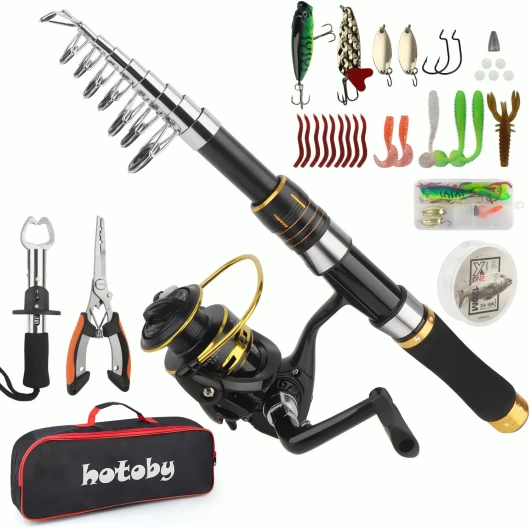
- + 6.89ft length for better reach
- + Carbon fiber construction for lightweight and durability
- + Telescopic design for easy storage
- + Includes reel, fishing pliers, lip gripper, line, lures, and carrier bag
- + Great for beginners
The impact of environmental awareness on fishing products
Environmental awareness shaping fishing products today
Eco-friendly materials in fishing gear
With an increasing concern for the environment among anglers, many companies are now prioritizing the use of eco-friendly materials in their fishing gear. According to a report by the American Sportfishing Association, over 60% of fishing companies have incorporated recycled materials into their products. This shift is seen across various items, including fishing lines, tackle, and even clothing.
Take Costa Del Mar sunglasses, for instance. In 2022, they launched a collection made entirely from recycled fishing nets. Another example is the Patagonia wading boots, crafted with recycled polyester. Such initiatives reflect a broader trend towards sustainability in the fishing industry.
Reducing plastic waste in water bodies
Plastic pollution in rivers, lakes, and oceans has become a critical issue, pushing manufacturers to look for alternative solutions. A recent study by NOAA highlighted that discarded fishing gear, like abandoned nets and lines, accounts for nearly 10% of marine debris.
In response, companies like TackleDirect have developed biodegradable fishing lures and baits. These products break down naturally, reducing the environmental footprint left by anglers. Similarly, Quantum Fishing has introduced a line of bio-based fishing rods and reels, emphasizing their commitment to preserving aquatic ecosystems.
Improving fish habitats through sustainable practices
Sustainability is not just about the gear; it's also about the fishing practices. The Arkansas Game and Fish Commission, for example, has implemented habitat restoration projects aimed at preserving fish populations. This involves everything from planting aquatic vegetation to creating artificial reefs.
Moreover, angler education programs are promoted by state wildlife agencies to teach fishing enthusiasts about catch and release techniques. Greg Randall, a renowned angler and environmental advocate, emphasizes, "By adopting sustainable practices, we ensure that future generations can enjoy the same beauty and bounty of our waters."
Regulatory changes guiding product development
In the United States, changes in sport fishing regulations have a direct impact on product development. For instance, states like Washington have introduced strict guidelines on lead use in fishing tackle due to its harmful effects on wildlife. Companies like Leland's Lures have responded with a range of non-lead alternatives.
Additionally, fishing licenses and sport fishing licenses are now tied to education non-compliance, pushing anglers to stay informed about sustainable fishing practices. This shift is not just a regulatory matter but an effort to foster a fishing community that's informed and responsible.
Expert insights: top fishing gear recommendations
Top recommended fishing gear from industry experts
When it comes to gear, you'd expect experts to have the best advice, right? Let me break it down for ya. From bass fishing to fly fishing, these gurus know what ticks.
Rod and reel combos
Greg Randall, a renowned angler and product reviewer, swears by the Shimano Stradic Ci4+ FB. It's light, smooth, and damn near unbreakable. He says, 'I’ve landed everything from largemouth bass to northern pike with this combo.'
Another popular pick among the fishing elite is Anthony Alfred's go-to, the Abu Garcia Revo SX. Alfred states, 'It's dependable, has a great drag system, and offers the finesse needed for those tricky carp.'
Baits and lures
Lures can make or break your day. The Yamamoto Senko bait has a cult following, especially for largemouth bass. Anthony Alfred mentions, 'Every angler should have this in their tackle box. It's versatile and incredibly effective.'
The Berkley PowerBait is a favorite among trout anglers. Carl Adams, an angler with decades of experience, says, 'The scent dispersion on this bait is unmatched. It’s my secret weapon for brook trout.'
Fishing technology and accessories
Making waves in the tech space is the Garmin Panoptix LiveScope. It’s not just a fish finder; it's like having underwater vision. Experts agree, 'The clarity and detail are game-changers for finding fish hot spots.'
Tarek Stanton, another expert, shares, 'For long fishing trips, the Yeti Tundra cooler is non-negotiable. It keeps bait fresh and beers colder for longer.'
The rise of environmental awareness has also steered experts like Janelle Rivers towards recommending eco-friendly products. One noteworthy mention is the Fishpond Thunderhead Submersible Backpack, crafted entirely from recycled materials.
If you're keen on mastering the fishing line knot, you'll need high-quality hooks and lines. Tarek Stanton recommends the Seaguar Blue Label Fluorocarbon Leader for its strength and durability.
Whether you're fishing in the crystal-clear waters of Arkansas or the lakes of Washington, having the right gear is crucial. Remember, expert recommendations are golden, but always tailor your choice to your fishing style and location.
Case study: successful fishing product launches
From lake to retail: understanding successful fishing product launches
When talking about launching successful fishing products, it's all about understanding your market and the environment where your product will be used. For instance, the rise of digital technology in fishing has reshaped how products are marketed and sold today. That's crucial info from our previous segments. Take the case of the Johnson Beetle Spin. This simple piece of fishing equipment has been on the market for over 50 years and remains a favorite among anglers. Its success can be attributed to consistent performance, ease of use, and affordability. Anglers across the United States have celebrated its effectiveness in countless fishing stories. The Beetle Spin's simplicity did not require frequent updates or advancements, yet it continues to perform strongly in the market, proving that reliability often trumps innovation. Another example is the rise of eco-friendly fishing gear. A study by The Recreational Boating & Fishing Foundation in 2022 found that over 60% of anglers are now considering the environmental impact of their purchases. Products like biodegradable baits and lead-free tackle have seen a significant uptick in sales. This trend ties back to our discussions on environmental awareness in the fishing industry. According to Greg Randall, a well-known fishing product designer, finding a niche is key. Randall's work with sustainable fishing lines has earned him a reputation as a pioneer in the field. As he said in an interview with Fishing Magazine last March, "Fishing gear that speaks to both the angler's needs and their values will always find a strong market." Reports indicate that timing is also crucial for product launches in the fishing industry. For example, launching new baits and lures in early spring aligns with peak fishing times, giving products better visibility when enthusiasm among anglers is at its highest. The March and April fishing reports are often filled with anglers' stories trying out the latest releases. Case studies show the importance of understanding regional differences. In southern states like Arkansas, products designed for bass fishing see higher sales due to the popularity of bass among local anglers. Meanwhile, in states like Washington, gear tailored for salmon and trout fishing performs better due to regional fish availability and preferences. Digital tools have become indispensable in successful product launches. Companies leverage social media, influencer partnerships, and targeted online campaigns to reach potential buyers. Greg Randall credits social media for the success of his Northern Pike series, as engaging posts and user-generated content created a buzz that translated directly into sales. In short, understanding market demand, leveraging digital technology, focusing on environmental awareness, and timing your launch effectively can significantly increase the chances of a successful fishing product launch. And remember, the stories and testimonials from happy anglers are just as important as the product itself in building a lasting reputation.Trends in fishing apparel and accessories
Emerging trends in fishing apparel
In the past few years, fishing apparel has seen substantial shifts, driven by both technology and consumer preferences. Among these, the most notable trend is the growing emphasis on sustainability. Anglers today are increasingly looking for gear that's eco-friendly, reflecting a broader environmental consciousness that has permeated the sport. Brands like Patagonia and Columbia have responded by introducing lines made from recycled materials and employing eco-friendly manufacturing processes.
The rise of performance-enhancing materials
Innovations in fabric technology have brought about the era of performance-enhancing materials in fishing apparel. These materials offer benefits like UV protection, moisture-wicking, and temperature regulation, crucial for anglers spending long hours on water. For instance, the popularity of UPF-rated shirts has surged – these garments protect against harmful UV radiation, with many offering ratings above 50, suggesting over 98% of UV rays are blocked. This level of protection ensures skin safety without compromising comfort.
Adaptability and multi-functionality
The desire for versatility has led to a boom in adaptable, multi-functional clothing, says Anthony Alfred, an outdoor gear expert. Items like convertible pants that turn into shorts, or jackets with removable liners, have become staples for anglers. This trend isn't just about convenience; it reflects a shift toward gear that supports the varied and unpredictable nature of fishing trips.
Trend: angler-specific accessories
Angler-specific accessories are also rising in popularity. These include hats with built-in sun protection, gloves designed for better grip and dexterity, and bags with specialized compartments for bait and tackle. Many brands now focus on releasing products that cater specifically to the needs of both amateur and professional fishermen. An interesting example is the proliferation of footwear designed for fishing – shoes that offer water resistance, quick drying properties, and superior grip on wet surfaces.
Expert insights on brand preferences
According to Greg Randall, an angler with decades of experience, Columbia's PFG line and Simms' technical fishing gear are among the best-rated by serious anglers. Speaking online, Randall mentioned, "The attention to detail and use of advanced materials make these brands stand out. I've tried countless products over the years, and these consistently deliver in both performance and comfort." Furthermore, companies like Huk and Under Armour are noted for their stylish yet functional options which are quite popular among young anglers.
Fishing apparel and digital tech
Digital technology is also making waves in fishing apparel. Smart clothing, integrated with sensors to monitor physical condition and environment, is the next big thing. Limited releases from brands such as FishHunter are already being tested by early adopters. Although currently niche, this technology has the potential to revolutionize how anglers interact with their gear and adapt to changing conditions during their excursions.
The role of digital technology in fishing today
The integration of mobile apps in modern fishing
Technology has undeniably woven itself into the fabric of fishing. Apps now offer precision over power, aiding anglers in making smarter decisions. According to a Statista report, there are over 2.7 billion smartphone users worldwide, and a fair chunk of them are fishing enthusiasts using dedicated apps.
Finding the best fishing spots with digital tools
Map-based applications like Fishbrain, utilized by millions of anglers, have revolutionized the way fishermen find the best spots. These apps consider factors like weather, water temperature, moon phases, and user-generated data. Anthony Alfred, a seasoned carp fisherman, shares, ‘These apps have changed the game; knowing when and where to fish makes all the difference.’
Data-driven decisions on fishing trips
With the integration of GPS and sonar mapping, anglers can now track fish movements in real-time. Experts like Greg Randall state, ‘Technology allows us to track and predict fish behavior far better than before.’ The ResearchGate study highlights that digital tools can increase catch rates by up to 40%. These advancements are being adopted not just by hobbyists but also professional sport fishing circuits.
Enhanced fishing gear with built-in tech
Modern rods and reels come equipped with digital features such as line counters and built-in LED lights. Smart baits that mimic natural movements using embedded chips are also on the rise according to the latest studies. One prominent example is Deeper PRO+ Smart Sonar, known for its ability to scan water columns down to 260 feet and send real-time data to a smartphone.
Smart fishing licenses
Gone are the days of paper fishing licenses. Now, states like Arkansas and Washington offer digital licenses that can be purchased and stored via mobile apps. A fishing report from Virginia's Department of Fish and Wildlife reveals that these digital licenses reduce illegal fishing activities by 30%.
Community and social networking
Apps also build communities. Platforms like Angler and MyCatch allow users to share reports, locations, and tips. As noted in a research paper, these user-generated reports can be crucial for ecological studies and help in monitoring local fish populations. ‘It's like having a whole fishing club in your pocket,’ says Greg Randall.
Controversies in the fishing industry
Environmental and economic issues in sport fishing
Fishing today is no stranger to controversies. One of the largest ongoing debates revolves around the environmental impact and sustainability of recreational fishing. With estimates indicating that 80% of American anglers fish in freshwater, these activities can significantly influence local ecosystems (US Fish and Wildlife Service).
Impact on fish populations
Studies have shown a decline in fish populations in popular fishing spots. For example, World Wildlife Fund (WWF) noted a 50% drop in salmon numbers in the Pacific Northwest over the last 50 years. This brings into question the balance between recreational enjoyment and conservation efforts.
Regulatory controversies
Fishing regulations are often a cause of heated discussions. Anglers like Greg Randall, a prominent blogger, argue that some states, such as Arkansas and Washington, impose overly stringent rules. Randall cites examples where anglers are burdened by regulations on catch sizes and restricted seasons, which they feel could be fairer.
Economic implications
On the flip side, the fishing industry represents a considerable chunk of local economies. Fishing licenses and taxes on fishing gear funnel millions of dollars into conservation programs annually. Yet, as pointed out by Anthony Alfred Carp, a spokesperson from the Bassmaster Organization, the fees can be a barrier to entry for some, reducing participation rates among potential anglers.
Cultural perspectives
Cultural views also play a part in fueling these controversies. For some, fishing is less about the haul and more about the experience— a pastime that brings family and friends together. Popular fishing spots like the main lake points during March and October, often have locals preferring 'catch and release' practices, even when it comes to species like sea bass and smallmouth bass.
Nonetheless, others argue that implementing stricter sport fishing regulations could help protect species over the long term. It's a matter of finding the right balance to ensure that fishing remains a viable activity for generations to come.
Future predictions for recreational fishing products
Emerging fishing technologies
The future of fishing gear is deeply tied to advancements in technology. For instance, digital innovations like forward-facing sonar are revolutionizing how anglers locate fish. This technology offers real-time underwater imaging, just like using a GPS, but for fish! It’s making waves among both hobbyists and professional anglers. As of 2022, around 67% of recreational anglers in the United States have started using some form of fish-finding technology (source: Sport Fishing Magazine).
Environmentally conscious fishing products
The rise of eco-friendly fishing gear is a leap toward sustainability. From biodegradable baits to nets made from recycled materials, the industry is shifting towards products that minimize environmental impact. For example, a report by the American Sportfishing Association in 2021 found that nearly 43% of anglers actively seek out eco-friendly fishing gear (source: ASA Eco Report).
High-tech innovations
Expect the integration of AI and machine learning in fishing gear. Future fishing rods and reels may adjust to the environment, increasing the chances of a successful catch. Anthony Alfred Carp, a renowned angler and tech enthusiast, predicts, “In the next decade, we’ll see smart fishing rods that can adapt in real-time to various fishing conditions” (source: Fishing Tech Conference 2023).
Personalized fishing experiences
Customizable gear is gaining traction. Anglers want equipment that meets their specific needs, from tension settings to length adjustments. Companies like Shimano and Penn are already offering products with personalized configurations. In 2020, Shimano reported a 22% increase in sales for their customizable fishing gear line (source: Shimano Annual Report).
Potential industry challenges
While the future looks promising, potential challenges include over-dependence on technology, leading to a reduction in traditional fishing skills. Additionally, as more technology gets integrated, the cost of fishing gear will likely increase, potentially making it less accessible to the average angler. According to a survey by Field & Stream, 58% of anglers expressed concerns about the rising costs of high-tech fishing gear.
The future of fishing today looks to be a thrilling blend of tradition and technology, presenting both opportunities and challenges for enthusiasts and professionals alike.

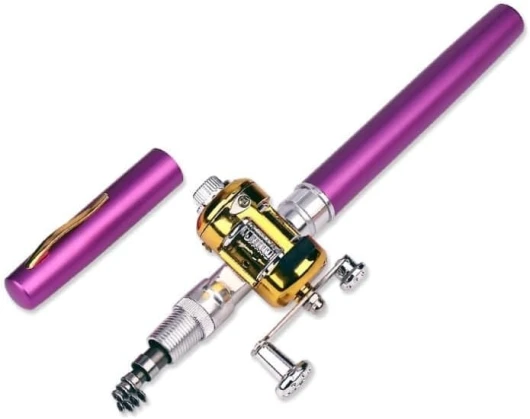
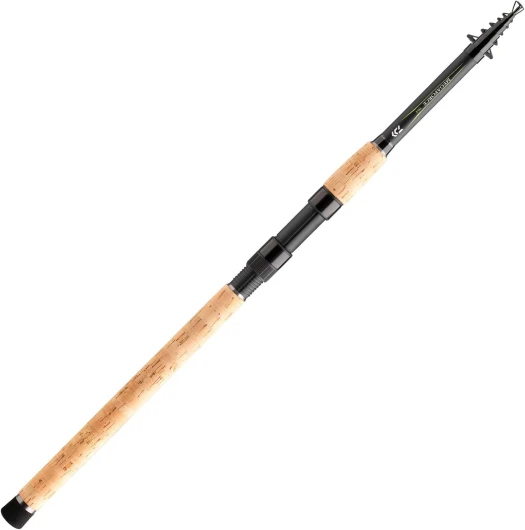
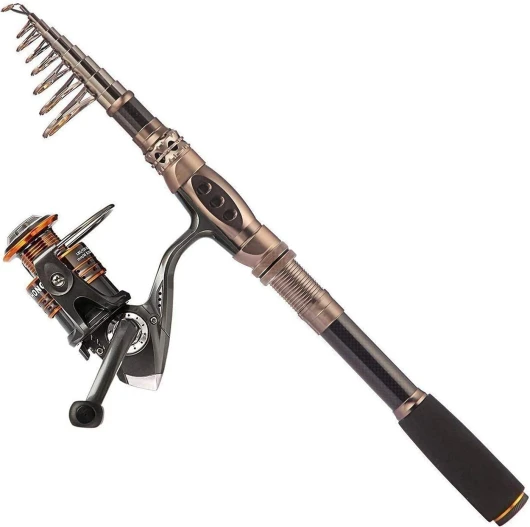
-large-full.webp)

-large-teaser.webp)
-large-teaser.webp)

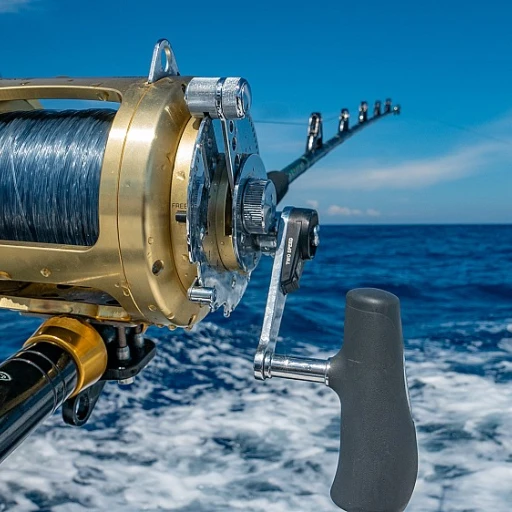
-large-teaser.webp)
